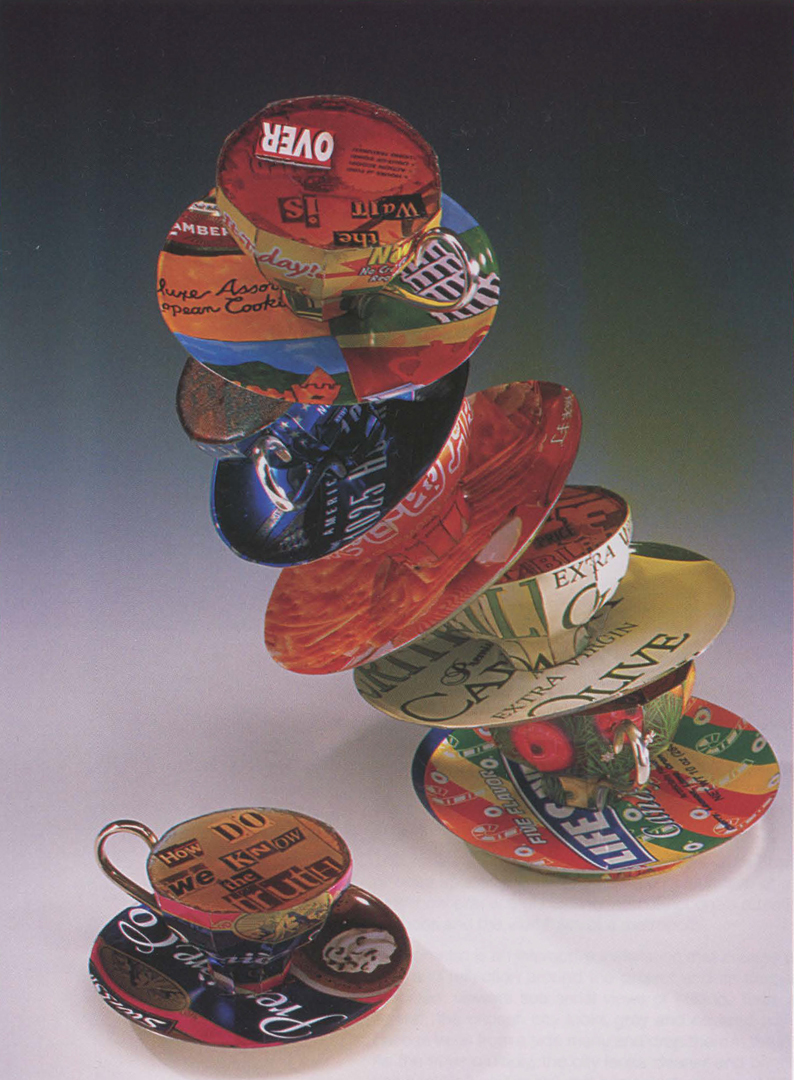Harriete Estel Berman: Consuming Conversation
Artist(s):
Title:
- Consuming Conversation
Exhibition:
Creation Year:
- 2001-2004
Medium:
- Pre-printed steel from recycled tin containers, sterling silver and brass handles, gold, rivets, magnet inserted or brass rod. Each cup is unique.13 feet x 11 feet x 8.5 feet
Category:
Artist Statement:
Like recurring conversations with friends over cups of tea or coffee, this variant edition of 200 cups responds to and reflects on the consuming conversation of our consumer society. Diverted from their destiny as trash, the recycled tin containers are deconstructed, cut, folded, and reassembled. Beginning as post-consumer material, they revitalize the mundane into the extraordinary. Conspicuous consumption as a cultural norm flourishes in the rapid-fire pace of changing styles, models, and merchandising, and even influences the marketing of art and craft. My work questions whether creativity, content, and craftsmanship are becoming yet another disposable commodity. Most importantly, the use of recycled packaging as a medium and source of content addresses a spectrum of social and political issues. Hopefully, this work transforms the viewers’ awareness of their participation and challenges their own complacency.
Technical Information:
Berman’s work is constructed from recycled tin containers that are opened and flattened, then stored in her studio according to color, pattern, or image subject (such as candy, crackers, standing women, sitting women, etc.). Each cup is fabricated from 10 to 13 wedge-shaped pieces cut from tins of one particular consumer product, so every finished cup has a different product identity. The metal pieces are punched from the tin cans using a hydraulic press and then bent by hand to fit with neighboring parts. The pieces are carefully soldered together. Handles are added. Saucers are formed using a hydraulic press to force the tin cans into a saucer-like shape. The first 70 cups have magnets so they can be stacked or rearranged in a random manner. The remaining cups are permanently arranged with a concealed brass rod to appear precariously balanced. This is a simplified description of the process. In reality, each construction step took months to figure out. Overall, it took four years to construct the 200 cups and finish the companion video.





